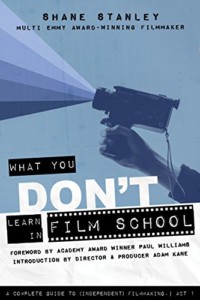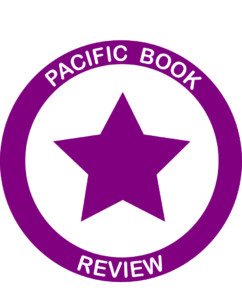 Title: What You Don’t Learn in Film School – A Complete Guide to Independent Filmmaking
Title: What You Don’t Learn in Film School – A Complete Guide to Independent Filmmaking
Author: Shane Stanley
Publisher: Industry Insider, LLC
ISBN: 978-1-976-98646-8
Pages: 201
Genre: Arts/Entertainment/Business
Reviewed by: Carol Davala
Pacific Book Review Star
Awarded to Books of Excellent Merit

From 1986 to the present, Shane Stanley has called himself a filmmaker. For over 30 years he has produced everything from industrial spots to box office hits, most notably to include SONY Pictures “Gridiron Gang”, starring Dwayne “The Rock” Johnson. He also founded and operated his own successful film company now approaching its 20th year. Exposed to the industry from a young age, Stanley donned a multitude of hats working with his father in the business. Here in his latest innovative release What You Don’t Learn in Film School – A Complete Guide to Independent Filmmaking, Stanley combines practical “real world” knowledge and his passion for making independent films, in a masterful effort to help a new generation of film enthusiasts reach their cinematic goals.
In this 10 chapter compendium, Stanley takes readers through a step-by-step process exploring the daily realities of the independent filmmaking business, which are seldom taught in the classroom. Here the emphasis is placed on the need to create low budget/high concept films and being able to navigate the sales, marketing, and distribution of your product. From script choices and dealing with investors, to the importance of pre-production work and surrounding yourself with a good multi-faceted team which supports your vision, Stanley delves into a wide array of topics. Discussions about registering your screenplay with the Library of Congress, obtaining production insurance, vetting your cinematographer, as well as feeding your crew, are all given equal importance. For those individuals just starting out in the film arena, Stanley is quick to emphasize “Do your time and earn your stripes.”
A lifetime of working in the industry undoubtedly affords Stanley a unique and personal perspective for his writing. From a well-rounded, solid vantage point he weaves factual components with touches of wit, humor, and slices of life happenings that help exemplify the make or break elements which brings a production to final fruition. With his no-nonsense approach he reveals, “I know filmmakers who have died of old age that never raised the funds to get their pictures produced.”
Stanley’s book is a quality reference for anyone interested in independent filmmaking. With knowledge and insight gained from his own early mistakes, he shares lessons learned and showcases the takeaways that have improved his ardent work strategy and helped him maintain a strong standing in the industry. Developing a good rapport and honoring a sincere and respectful relationship with all business associates, whether money lenders, lead actors, or the set gofer is crucial advice, as he notes “Relationships are the skeleton key to opening the right doors and closing deals.” In the oftentimes dog eat dog world of movie making, Stanley’s willingness to grant insider’s access to the elusive elements that help generate a viable film production seems a testament to his appreciation and willingness to help affirm the art of independent filmmaking as a plausible career option. Ideally it is for those who are willing to do whatever it takes to get their ideas on the screen.
Film school curriculums would do students a service to include Stanley’s book on a required reading list. His up close and personal experience in the filmmaking business is provided in a very open and honest format, shedding a much needed light on the realities of working in this industry which go far beyond the traditional offerings presented behind the buffering walls of academia. This book is a very valuable resource which needs to be in everyone’s bookshelf from the beginning actor to the accomplished director/producer.

